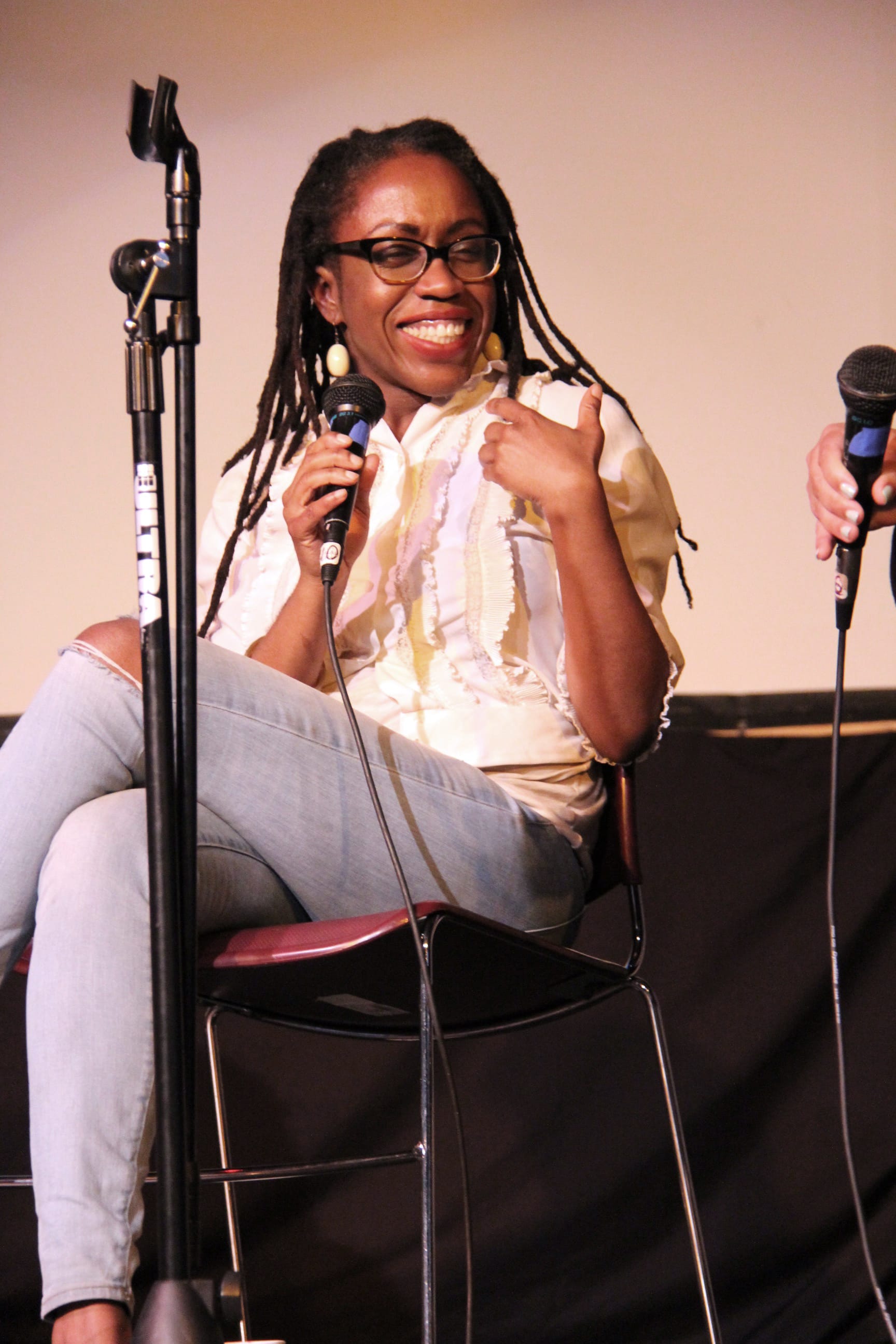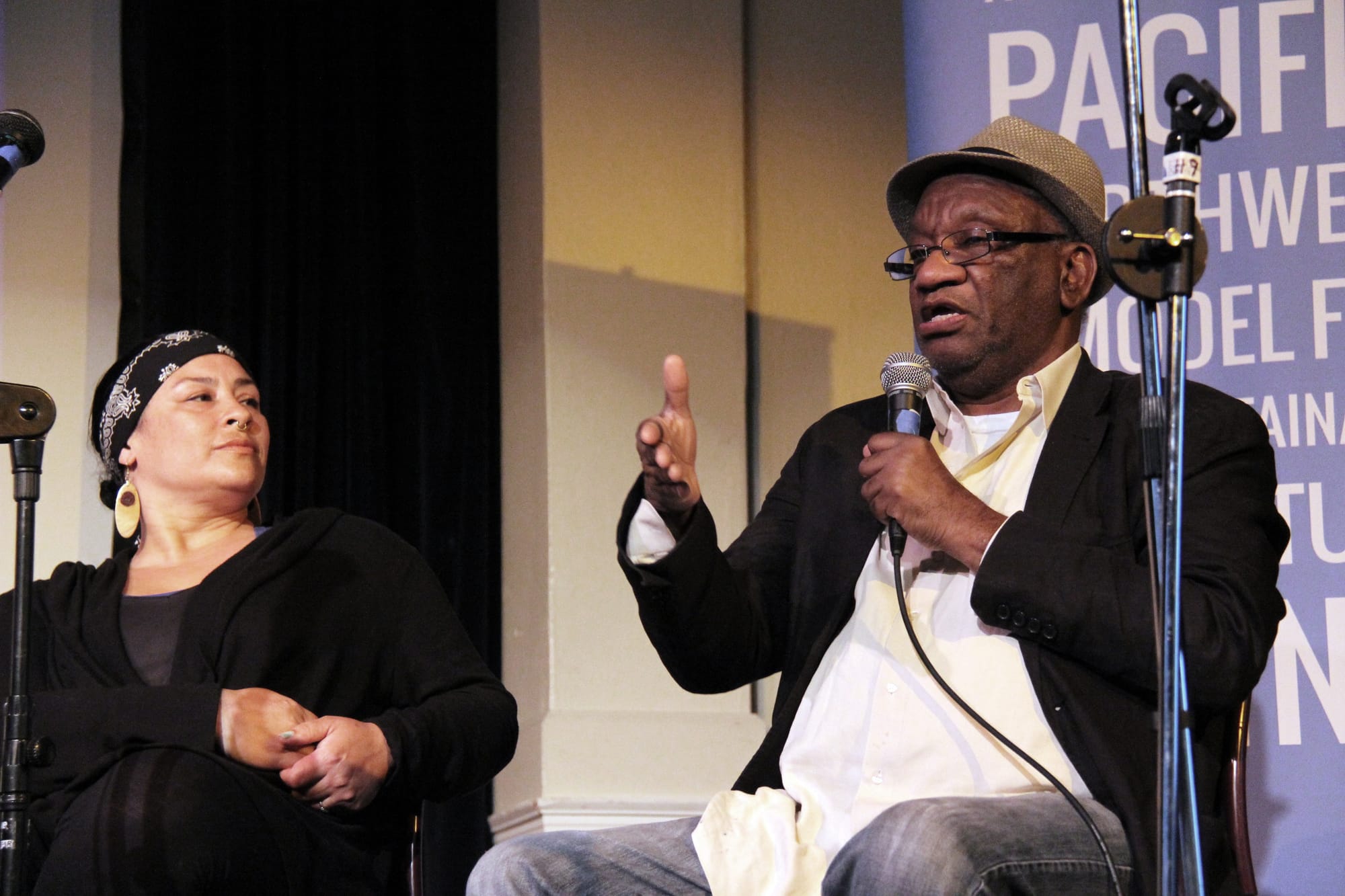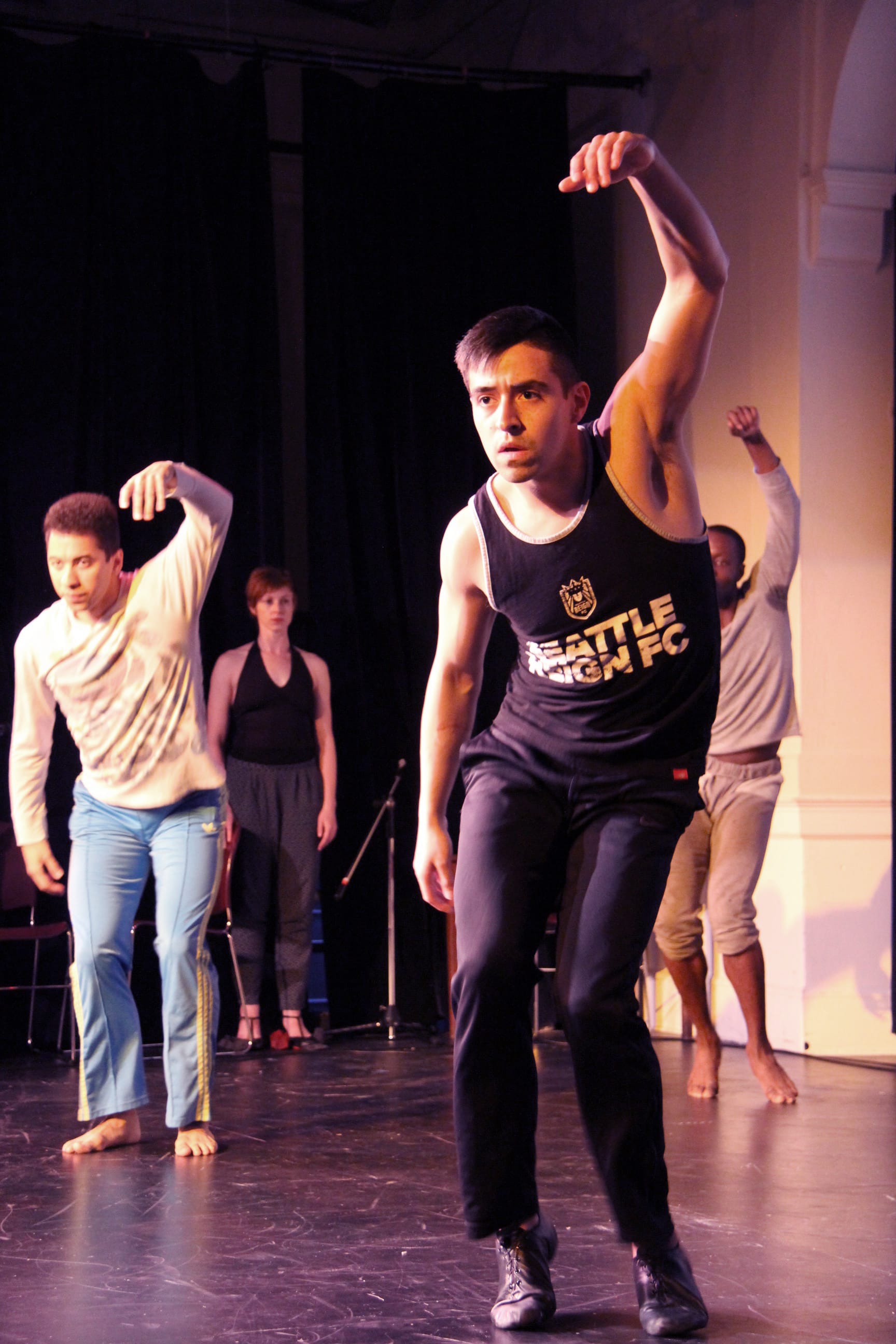When “The Color Purple” opened on Broadway in 2005, a spotlight shined bright on Donald Byrd. Byrd, a veteran modern choreographer based in Seattle, had worked on the show despite a culture that he felt did not value art about and by African Americans such as himself.
“There is an undercurrent of racism in the Broadway scene that makes me sad,” he told the Seattle Times. “There were agents who didn’t even want their people to audition for this, who said, ‘Black shows just don’t sell, it won’t run long.’”
Byrd and his compatriots proved them wrong. To date, the show has grossed hundreds of millions of dollars. It was nominated for 11 Tony Awards.
Byrd was nominated for Best Choreography. He lost to Kathleen Marshall from “The Pajama Game,” but even a nomination can bring job offers and opportunities.
“Nobody called me,” Byrd said. “There were no ‘black’ shows coming up, so I didn’t get a call.”
Byrd expressed the at-times frustrating dynamics that accompany being an artist of color at “The Color of Race,” an art salon hosted by Crosscut and funded by the Paul G. Allen Family Foundation, the City of Seattle and the Office of Arts & Culture. Longtime Crosscut contributor Florangela Davila moderated the event, which was held at the Rainier Arts Center earlier this month.
Byrd’s fellow panelists and performers included actress and director Rose Cano, conceptual artist C. Davida Ingram, filmmaker Tracy Rector, and Geo Quibuyen, who performs as Prometheus Brown in the hip hop duo Blue Scholars. The group spoke candidly about what it’s like to be an artist of color in Seattle, and what it means to address issues of race within their respective crafts.

Spectrum Dance Theater performs a dance from show "A Rap on Race" Photo by Sophie Glass
When a dominant culture controls resources, it also controls the narrative. In the United States, that has meant that artists of color have often been pushed to the fringes, relegated to corners viewed through a lens of race, like Donald Byrd was.
Even when mainstream art highlights the cultures of people of color, it is often produced by white people. “Over 4,000 films have been made [about] native people, and most of those are made by non-natives,” Rector told the crowd. Rector, who identifies as an urban Native of Choctaw and Seminole descent, has produced hundreds of films, many of them focusing on different aspects of Native American culture. In addition to her film work, She has also been heavily involved in arts advocacy in the city, serving as executive director for Longhouse Media, a nonprofit organization dedicated to elevating Native American stories through media training.
She asked the audience to name one film produced, written and directed by a Native American. The only answer the audience of roughly 300 could come up with was Sherman Alexie’s 1998 film “Smoke Signals,” which is credited as the first commercially-released film produced, written and directed by Native Americans.
“It’s the reality,” Rector said. “I’ve dedicated my life and my work to bringing up people, teaching myself and making sure to do the work to get my foot in the door and sit at the tables where decisions are made just so our community has a chance to tell our own stories in the way they want to do it.”
Through Longhouse Media, Rector is working to foster the next generation of indigenous filmmakers, equipping young people with the tools necessary to effectively share their own stories. She said she strives to bring native folks with her to every opportunity she is afforded, making sure to help create a pathway for her native community and to leave a legacy for those to come.
“It’s really important to give the camera to the people the story is about,” said Cano, a director, actor and playwright in Seattle with strong roots in Peru. In her work, Cano draws upon these roots and the experiences of the diverse cast of people she is surrounded by at her job as a medical interpreter at Harborview Medical Center. She is one of the founding members of eSe Teatro, Seattle’s first Latino theatre group that has been retaining Latino thespians in Seattle over the past five years.
Cano spoke to the frustration that can come with being the “stamp of authentication” for a production. “We’re called upon after the play has been decided on … further in the process, to give it a flavor,” she said.

Ingram equates this with showing up to a meal with others, but not bringing anything to share. “If that’s just your mode, to take, then there’s something wrong with you,” she said.
One way to combat this, Ingram said, is through the creation of one’s own space. “I don’t like to give whiteness too much credence in my life. You find your community where you are at,” she explained. “If the dominant society doesn’t provide what you want, what are you going to do? Cry?”
In Seattle, theater groups such as Hansberry Project and eSe Teatro uplift the work of thespians of color. Black Arts/West, Seattle’s first black theater, has been doing similar work since 1969. Historical institutions like Langston Hughes and Rainier Arts Center provide space for other artists and continue to build upon the rich legacies of Seattle artists.
Free, or inexpensive, digital media tools paired with the accessibility of the Internet is leading to an increase in visibility of art by people of color.
“If you don’t tell your story, someone else is going to tell it for you,” said Quibuyen, who has shared his rhymes with listeners all over the world live and on the web across numerous steaming platforms. “They’re going to fuck it up, so you might as well tell your own story.”

Geo Quibuyen talks about the intersection of race and art at the Crosscut Arts Salon. Photo by Sophie Glass
It’s complicated telling your story, particularly when an audience is made up of majority white folks.
For starters, without base-level knowledge, there are plenty of opportunities for being misunderstood. Critics mistook the patois of Barbados for gibberish in pop star Rihanna’s chart topping “Work,” and in Beyonce’s “Lemonade” many white writers missed themes that echoed Black culture.

And regardless of its medium, art is a tangled mess that includes charged emotions and experiences of those who create it. The deeply personal nature of being an artist requires a particular level of vulnerability that not many other professions require.
To be an artist of color today is to weave ancestry and history in your work, Quibuyen said. “There’s a history that precedes me that I must be at least aware of,” he said. “I represent the community … the communities I self-identify as, and also that I may or may not identify with that claim me … Filipinos, brown folks, hip-hop heads.”
Quibuyen explained that in his work, he is always thinking about race, economics, gentrification, politics, even his son’s little league game. “When I’m writing a song and performing, I am fully 100 percent overly aware of who the audience is [and] who I think I’m speaking for … All these things are spinning in my head.”
Byrd, who has been in the business for decades, said he is less self-conscious now than he was when he was a young performer. “I do what I do and I feel free to do it,” he said. “In some ways, the fact that people have sometimes responded … not negatively, but something like negative — that’s liberating, because then I’m not trying to meet someone’s expectations … I’m just doing work.”
Davila pointed out the complicated tension that arises when the majority of critics are white and may not understand performances and pieces due to language and cultural barriers.
Cano faces a different set of challenges with her audiences. In her theatre work, the dialogue often moves between Spanish and English.
To Cano, the use of dual languages is natural and dictated by the story rather than the idea of making a statement. Through her work in the medical field, she is surrounded by people speaking an assortment of languages. “I know there’s a conversation I don’t understand and so I’m paying attention to the body language and the gestures,” she said. “My idea is that [the performances] can be understood by anyone who speaks English or anyone who speaks Spanish, without you having to say the exact same thing two times.”
The musicality of the approach, she said, can “broaden our ears.”

Rose Cano performing at the Crosscut Arts Salon. Photo by Sophie Glass
It was clear with the conversation on stage that these are not questions with singular answers. They are layered with complications and personal experiences.
Quibuyen addressed the complicated role that art and race plays in his own work. He expressed that, at times, he feels like he’s in the wrong lane, taking the black art of rap despite the fact he isn’t black himself.
“There’s one part of my brain that says appropriation is not cool. It eliminates the original voices out there and it waters down a story and all those things,” he said. “But on the other hand, am I complicit in that? Did I displace a black voice by jumping into this art form that I grew up on and appreciated? Historically, as a Filipino dude, where do I fit in this?”
While it may be oversimplifying it, it is easy to see that appropriation is one of the results of a lack of resources, non-diverse audiences and the pigeon-holing of artists of color. Can this tension, between those who understand the importance of a story’s foundation and those who don’t, be relieved? Perhaps, yes. Funneling funding into programming that reflects well-intentioned efforts for diversity and equity in the arts should be the logical next step.
“Right now, because of #BlackLivesMatter, I’ve seen a resurgence around blackness in Seattle that has surprised me,” Ingram said. “But … equity is a math term, so I always say, ‘Show me your budget. If your budget doesn’t have money flowing into communities of color, you’re bullshit.”

“Hire people of color and women,” Rector said.
“And women of color,” Ingram said, adding, “some people can’t do that math.”
Efforts to elevate artists of color in the city are in full force. Each of the panelist’s work is pushing boundaries in their own fields: the success of Blue Scholars and Quibuyen’s community organizing around food; the defiant embrace of new tools like the drones in Ingram’s work; and virtual reality of Rector’s latest film, Spectrum Dance’s commitment to explore programming of race this season; and eSe Teatro’s partnering with ACT Theatre to reach new audiences. It is in tangible solutions like these that propel change and push the needle of progress.
As Byrd eloquently put it: “All communities need to be engaged in conversations about race in this country, until it’s no longer necessary to even have a conversation about race.”
Watch the entire Crosscut Arts Salon here on the Seattle Channel.
Read other arts salon stories here.
Martha Tesema is a reporter and photographer from the Northwest, currently based in New York. She primarily writes on the intersection of social justice and arts and culture. You can view her work at martesema.com and follow her on Twitter @martesema.
This story is part of a three-year initiative, funded by the Paul G. Allen Family Foundation, to elevate coverage of the arts in the Northwest. In 2016, Crosscut will curate one more Civic Arts Salon featuring artists who develop visual, film, or performance art that explores the nexus of arts and tech in the fall. To be notified of these events, sign up for our daily newsletter here.
Co-sponsored by the City of Seattle and the Office of Arts & Culture, in cooperation with Crosscut.


